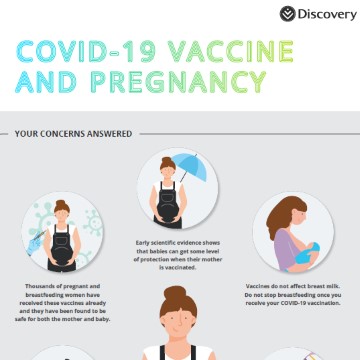
Discovery COVID-19 Vaccination Navigator
We have created a dedicated portal to support you at every step of your vaccination journey. Your personalised vaccination navigator will help you to.
- Know how to prepare for your COVID-19 vaccination
- Book for your vaccination at a Discovery-managed site near you
- Track where you are in the COVID-19 vaccination rollout
- Create a digital version of your vaccination card for safe keeping



















